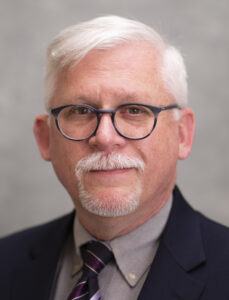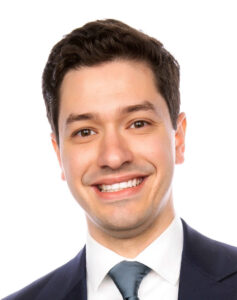Writer: Esteban Pages
 3 min read April 2023 — With the prevalence of the global remote workforce and technological innovation moving at an increasingly faster pace, the need to upskill has created growing demand for micro-credentials. Does this mean a major shift away from traditional, four-year programs? To explore whether it is possible to build a cohesive offering that combines both traditional and non-traditional learning programs, New Jersey higher ed leaders shared their perspectives on a changing landscape.
3 min read April 2023 — With the prevalence of the global remote workforce and technological innovation moving at an increasingly faster pace, the need to upskill has created growing demand for micro-credentials. Does this mean a major shift away from traditional, four-year programs? To explore whether it is possible to build a cohesive offering that combines both traditional and non-traditional learning programs, New Jersey higher ed leaders shared their perspectives on a changing landscape.
Mark McCormick, President, Middlesex College 
Today’s traditional college-aged students grew up with so much being available on demand, and yet for the most part higher education is not available to students “on demand.” Having broadened our modality of course delivery of necessity during the pandemic, we are maintaining an array of course modalities to meet student needs including fully in person, asynchronous online, synchronous remote via Zoom and hybrid courses.
We are also embedding industry-recognized and -valued microcredentials in credit-bearing courses so that students earn those credentials or badges along the way to completing an academic certificate or degree program. This career laddering or stackable credentials offer students an opportunity to gain employment before earning the associate degree. Now when students graduate, they don’t just have a degree, they also have multiple industry-valued credentials that prepare them for employment and have value in the employment market.
 Steven Rose, President, Passaic County Community College
Steven Rose, President, Passaic County Community College
We have record low unemployment at this point and I don’t think we have ever had more employers seeking us out and wanting to hire our students. Never before have we seen this kind of attention, where employers are desperate to get students as they graduate. At the same time, there hasn’t been a bigger concentration of students actively pursuing what they are interested in. That is why we are spending a lot more time on career development to help students understand what career options are available. There are so many new jobs out there, we are actually starting a surgical tech program here and are building operating rooms right now. Healthcare has really become a focus for us as they are a large employer in the region and have come to us frequently. They are looking towards the long term to prepare for any shortages like for nurses, which are in high demand at the moment.
Students are coming in with an employment mindset and are more concerned about getting to that point. They are not as focused on getting a degree anymore and can easily get micro-credentials that accomplish a similar goal. We are blurring the lines between continuing education and the more traditional credit side of our operations which lead to associate, bachelor and master’s degrees. We need to be more conscious of how things can mix and how we can use a student’s prior learning assessment to give them credit within our traditional learning.
William Austin, President, Warren County Community College
The downside of all this rapid innovation in AI is we won’t need as many people in the workforce in the future and it’s not being discussed enough. By the end of this decade, there will be 60% to 70% automation in some industries and with the labor market being what it is, executives are looking for automated options if workers aren’t coming back. We’re preparing for a workforce that will be drastically reduced because machines will do the work. These aren’t just low-skilled jobs, but more complicated work too. Drones can replace engineers to do building assessments, for example. Highly educated positions will be replaced and it will shock many people. The biggest challenge we face as educators and society will be to balance automation with purpose and meaning in people’s lives and work. Programs and curriculum are also generally very outdated. I honestly believe that everyone in higher education should get a graduate recertification every 10 years or else get out of the business. It’s because things are changing so rapidly, and we can’t rely on tired, stagnant models. We need to constantly ask the question of why people should invest in college right now and if we’re giving them a decent return on investment.
 Andrés Acebo, Interim President, New Jersey City University
Andrés Acebo, Interim President, New Jersey City University
It is pinned to the principle of meeting students where they are. Students here have tenacity and perseverance. They persist despite seemingly insurmountable odds and that is exactly what the future workforce is going to require. Every day, a community of firsts is forged on this campus and our mission is to ensure that those communities of first are not last. There are also many traditional aspects of education that are celebrated but they are archaic. Public education is in the driver’s seat of innovation. That combination happens on our campus and higher education overall needs to embrace that much more. Rather than institutions cannibalizing each other, there should be a focus on meeting tomorrow’s moments collaboratively. The higher education ecosystem needs institutions that serve and drive distinct missions.
For more information, visit:

